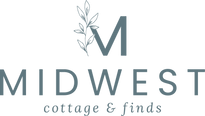
What is milk paint?
Milk paint is a powdered form of paint. It’s mixed with water to become liquid. Our new formula is made from four 100% natural ingredients that you can actually pronounce - casein (milk protein), lime (calcium hydroxide), natural pigments and plant-based filler. That’s literally all that’s in our paint. Nothing more, nothing less (except all of the endless possibilities packed into every pouch)!
This simple formulation causes milk paint to behave very different from its more modern counterparts like latex and acrylics. It provides a beautiful matte finish that shows amazing color variance.
Milk paint is also the oldest known form of paint! It pre-dates chalk type, latex, acrylic and even oil paints! Milk Paint has been around for thousands of years and has been discovered in cave paintings and Egyptian tombs.
What makes MilkPaint™ special?
Milk paint is a very unique paint both in its composition and the looks it can create.
It is the absolute best paint for raw wood. It penetrates like a stain, but looks like a paint. This not only preserves the grain and original texture of the surface, but it also won't chip or flake away.
What is the difference between milk paint and chalk-based paints?
These are two totally different kinds of paint. Both have advantages and disadvantages and can be used in a variety of ways. Here are some of the similarities and differences…
Milk paint comes in powdered form and needs to be mixed with water. Chalk-based paints come in liquid form and have a limited shelf-life.
When milk paint is used on raw wood it soaks in and becomes part of the substrate, which means it will never chip or peel. Chalk-based paints have good adhesion, however they sit on the surface and can result in possible peeling.
Milk paint will show wood grain in most cases and can also be used as a stain. Chalk-based paints are thicker and will cover wood grain.
Milk paint can be distressed and/or crackled. It will resist on some finishes giving an authentic chippy, aged look. Chalk-based paints can be distressed and/or crackled with a medium, but will never chip.
Milk paint is made from just five simple ingredients, contains no VOCs, is completely organic and biodegradable, as well as non toxic. Chalk-based paints vary by manufacturer.
Is Miss Mustard Seed's MilkPaint™ safe to use on cribs and baby toys?
Miss Mustard Seed’s® MilkPaint™ is committed to providing you with refinishing products that are safe for you, your children and the environment. Paints and finishes are non-toxic and child-safe!
